Jaguar I-Pace vs Mercedes EQE SUV – Differences & prices compared
Compare performance, boot capacity, efficiency and price at a glance.
Find out which car is the better choice for you – Jaguar I-Pace or Mercedes EQE SUV?
Costs and Efficiency:
Looking at overall running costs, both models reveal some interesting differences in everyday economy.
Mercedes EQE SUV has a a bit advantage in terms of price – it starts at 71600 £, while the Jaguar I-Pace costs 79200 £. That’s a price difference of around 7647 £.
In terms of energy consumption, the advantage goes to the Mercedes EQE SUV: with 18.30 kWh per 100 km, it’s distinct more efficient than the Jaguar I-Pace with 25.20 kWh. That’s a difference of about 6.90 kWh.
As for range, the Mercedes EQE SUV performs noticeable better – achieving up to 611 km, about 142 km more than the Jaguar I-Pace.
Engine and Performance:
Under the bonnet, it becomes clear which model is tuned for sportiness and which one takes the lead when you hit the accelerator.
When it comes to engine power, the Mercedes EQE SUV has a distinct edge – offering 625 HP compared to 400 HP. That’s roughly 225 HP more horsepower.
In acceleration from 0 to 100 km/h, the Mercedes EQE SUV is clearly perceptible quicker – completing the sprint in 3.70 s, while the Jaguar I-Pace takes 4.80 s. That’s about 1.10 s faster.
In terms of top speed, the Mercedes EQE SUV performs somewhat better – reaching 240 km/h, while the Jaguar I-Pace tops out at 200 km/h. The difference is around 40 km/h.
There’s also a difference in torque: Mercedes EQE SUV pulls evident stronger with 950 Nm compared to 696 Nm. That’s about 254 Nm difference.
Space and Everyday Use:
Whether family car or daily driver – which one offers more room, flexibility and comfort?
Both vehicles offer seating for 5 people.
In curb weight, Jaguar I-Pace is barely noticeable lighter – 2226 kg compared to 2440 kg. The difference is around 214 kg.
In terms of boot space, the Jaguar I-Pace offers slightly more room – 638 L compared to 520 L. That’s a difference of about 118 L.
In maximum load capacity, the Mercedes EQE SUV performs somewhat better – up to 1675 L, which is about 222 L more than the Jaguar I-Pace.
When it comes to payload, Mercedes EQE SUV noticeable takes the win – 580 kg compared to 444 kg. That’s a difference of about 136 kg.
Who wins the race?
The Mercedes EQE SUV proves to be outperforms in nearly all aspects and therefore becomes our DriveDuel Champion!
Mercedes EQE SUV is the better all-rounder in this comparison.
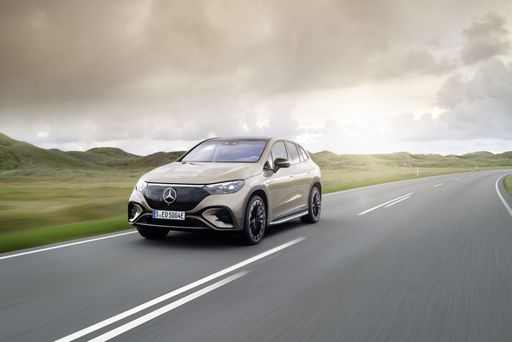
Mercedes EQE SUV
Jaguar I-Pace
The Jaguar I-Pace represents a remarkable fusion of cutting-edge electric performance and iconic British luxury. With its sleek design and spacious interior, this model redefines what one can expect from an electric vehicle in terms of style and comfort. Its impressive driving dynamics and advanced technology make it a standout choice for those looking to make a statement on the road.
details @ media.jaguar.com
@ media.jaguar.com
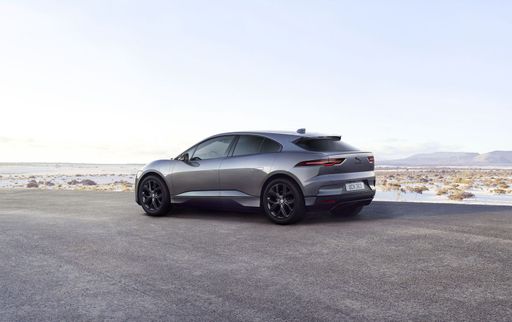 @ media.jaguar.com
@ media.jaguar.com
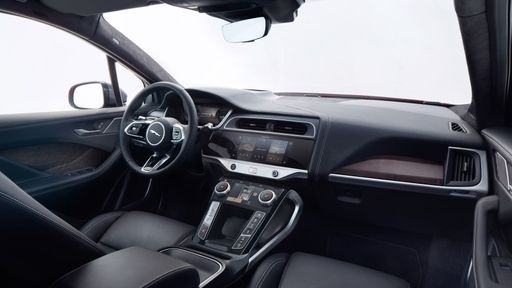 @ media.jaguar.com
@ media.jaguar.com
Mercedes EQE SUV
The Mercedes-Benz EQE SUV represents a fusion of advanced electric mobility and luxurious design, offering a refined driving experience that aligns with the brand's renowned legacy. Inside, the cabin is adorned with high-quality materials and state-of-the-art technology, providing both comfort and functionality for modern drivers. Its dynamic exterior is crafted to enhance aerodynamics while maintaining a distinctive and elegant presence on the road.
details @ group-media.mercedes-benz.com
@ group-media.mercedes-benz.com
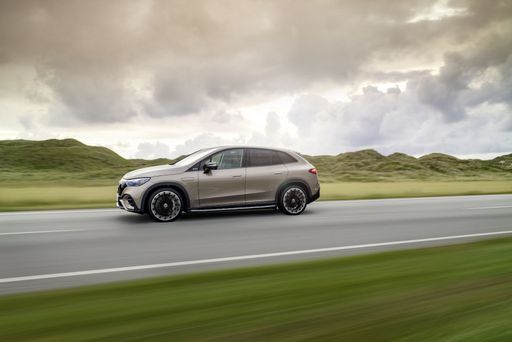 @ group-media.mercedes-benz.com
@ group-media.mercedes-benz.com
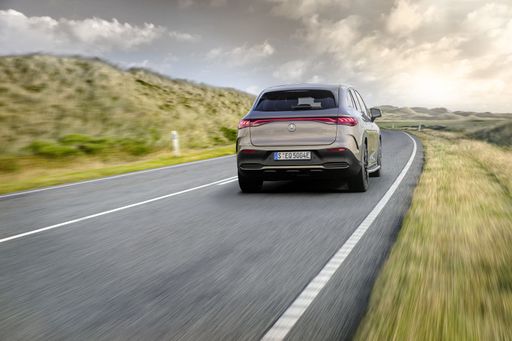 @ group-media.mercedes-benz.com
@ group-media.mercedes-benz.com
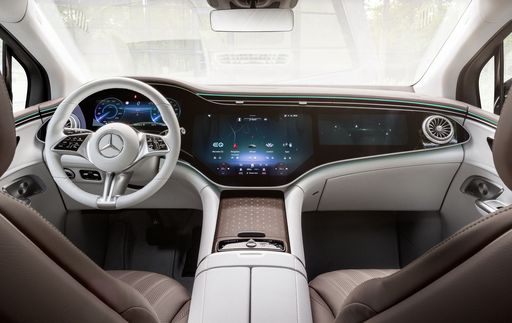 @ group-media.mercedes-benz.com
@ group-media.mercedes-benz.com

|

|
|
|
|
Costs and Consumption |
|
|---|---|
|
Price
79200 - 85500 £
|
Price
71600 - 125100 £
|
|
Consumption L/100km
-
|
Consumption L/100km
-
|
|
Consumption kWh/100km
25.20 kWh
|
Consumption kWh/100km
18.3 - 23.1 kWh
|
|
Electric Range
469 km
|
Electric Range
453 - 611 km
|
|
Battery Capacity
84.70 kWh
|
Battery Capacity
90.5 - 96 kWh
|
|
co2
0 g/km
|
co2
0 g/km
|
|
Fuel tank capacity
-
|
Fuel tank capacity
-
|
Dimensions and Body |
|
|---|---|
|
Body Type
SUV
|
Body Type
SUV
|
|
Seats
5
|
Seats
5
|
|
Doors
5
|
Doors
4
|
|
Curb weight
2226 kg
|
Curb weight
2440 - 2615 kg
|
|
Trunk capacity
638 L
|
Trunk capacity
520 L
|
|
Length
4682 mm
|
Length
4863 - 4879 mm
|
|
Width
2011 mm
|
Width
1940 mm
|
|
Height
1566 mm
|
Height
1672 - 1685 mm
|
|
Max trunk capacity
1453 L
|
Max trunk capacity
1675 L
|
|
Payload
444 kg
|
Payload
505 - 580 kg
|
Engine and Performance |
|
|---|---|
|
Engine Type
Electric
|
Engine Type
Electric
|
|
Transmission
Automatic
|
Transmission
Automatic
|
|
Transmission Detail
Reduction Gearbox
|
Transmission Detail
Reduction Gearbox
|
|
Drive Type
All-Wheel Drive
|
Drive Type
All-Wheel Drive, Rear-Wheel Drive
|
|
Power HP
400 HP
|
Power HP
265 - 625 HP
|
|
Acceleration 0-100km/h
4.80 s
|
Acceleration 0-100km/h
3.7 - 7.1 s
|
|
Max Speed
200 km/h
|
Max Speed
210 - 240 km/h
|
|
Torque
696 Nm
|
Torque
550 - 950 Nm
|
|
Number of Cylinders
-
|
Number of Cylinders
-
|
|
Power kW
294 kW
|
Power kW
195 - 460 kW
|
|
Engine capacity
-
|
Engine capacity
-
|
General |
|
|---|---|
|
Model Year
2023
|
Model Year
2023 - 2025
|
|
CO2 Efficiency Class
A
|
CO2 Efficiency Class
A
|
|
Brand
Jaguar
|
Brand
Mercedes-Benz
|
What drivetrain options does the Jaguar I-Pace have?
Available configurations include All-Wheel Drive.
The prices and data displayed are estimates based on German list prices and may vary by country. This information is not legally binding.
